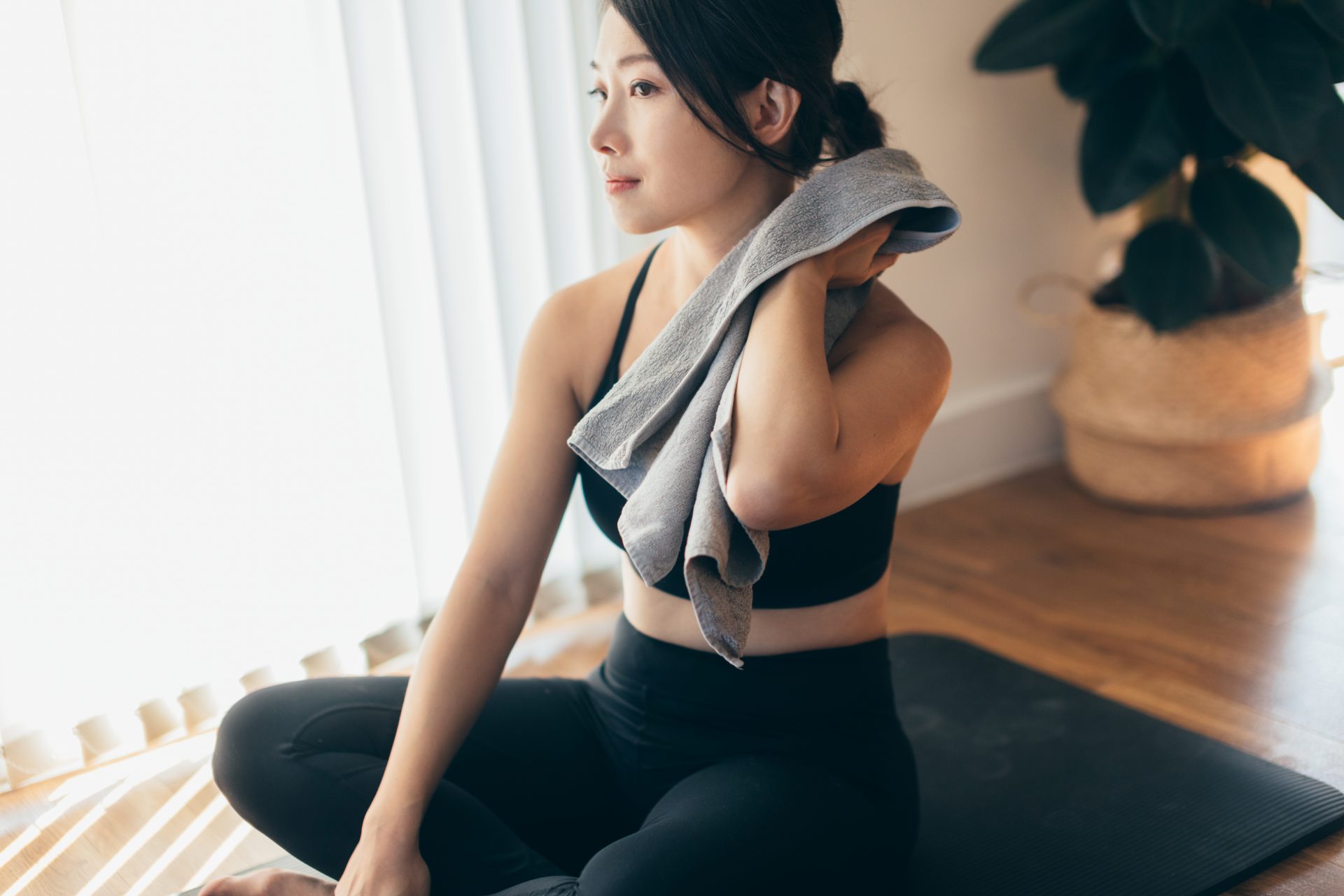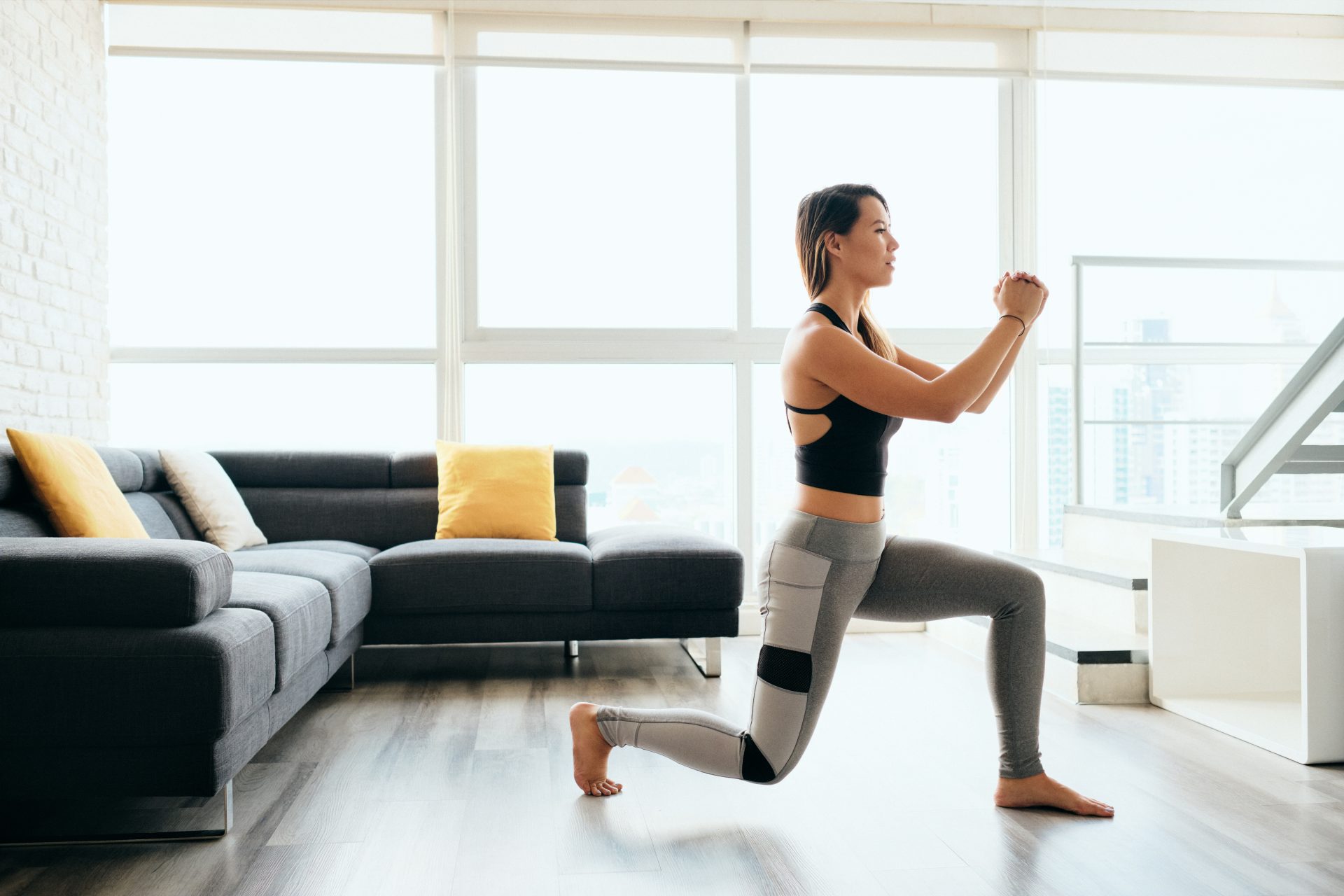These bodyweight exercises are perfect for people who love at-home workouts but don’t have much space.
2020 is the year we all realised just how multifunctional our homes can be. Acting as everything from our offices to our gyms and everything in between, this year our living spaces doubled up as a place to keep our minds and bodies busy while the world outside ground to a halt.
At-home workouts in particular have been a godsend, and continue to be now that some regions of the UK have been placed under the new tier four coronavirus restrictions. And, as it turns out, this switch to exercising in living rooms and bedrooms has sparked a change that looks set to last a long time.
According to research conducted by RunRepeat, an organisation that reviews athletic shoes, people are planning on sticking with their home workout routines in 2021, with 39.14% of previously avid gym-goers reporting that they plan to switch to at-home fitness full time.

This is all well and good, but a problem that many face is that they just don’t have that much space in their home. No need to worry if you have a small house or flat, though, because there are plenty of exercises you can try that require no equipment and minimal space.
Bodyweight exercises are ideal for working out in a smaller room, and they can do great things for your fitness and overall strength. As personal trainer Veowna Charles explains, “bodyweight training is an effective way to improve your balance, mobility, posture, muscle strength and aerobic capacity.”
She goes on to say that, for a workout in a slightly cramped living space, you can focus on “using dynamic exercises to move through your full range of motion,” which will also improve “flexibility and joint health.”
You may also like
Fitness motivation: 6 trainers on how they stay inspired during the festive season
If you’re not sure where to start with putting together a bodyweight exercise plan, then Veowna recommends working in some squat and lunge variations. They provide an effective lower body workout without needing a great deal of room, and can help you to build up your strength and balance, no equipment required.
Sumo squat pulse
Sumo squat pulses “improve hip mobility and leg strength,” says Veowna, and they’re super simple to do. Start by standing with your feet wider than hip width apart and then, making sure you “focus on core engagement to maintain an upright posture throughout the movement,” slowly squat down. Stop once your legs are at a 90 degree angle, and then use your knees to move your body slightly up and down in a pulsing motion for 30 seconds.
Curtsey lunge into lateral leg raise
To perform a curtsey lunge, stand with your feet around shoulder width apart, and then step your right foot back and cross it behind your left – almost as though you’re curtseying. When you’re at the bottom of your lunge with your back leg bent at 90 degrees, push yourself back upright. Instead of going straight into standing, though, keep your right foot moving and raise it out to the side, hold for a second, and then return to your starting position.

Veowna recommends doing four sets of 12 reps on each side, with 45 seconds of rest between each set. This will help improve “lower body mobility, unilateral balance and strength.”
Pistol squat
Pistol squats require good balance and are great for building up the muscles in your glutes, hamstrings and hips. Start from a standing position with your right foot lifted off the ground and extended out in front of you, and then bend your knees and keep your core tight to lower your body down towards the ground.
When doing a normal pistol squat, you should stop and return to standing once your bum is a few inches away from the floor. For beginners, though, Veowna suggests using a chair either “for support or to sit at the bottom of your squat.”
“Move as fast as you can to increase your heart rate,” she continues, “or focus on doing a slow, controlled movement to improve balance.”
Images: Getty
Source: Read Full Article
